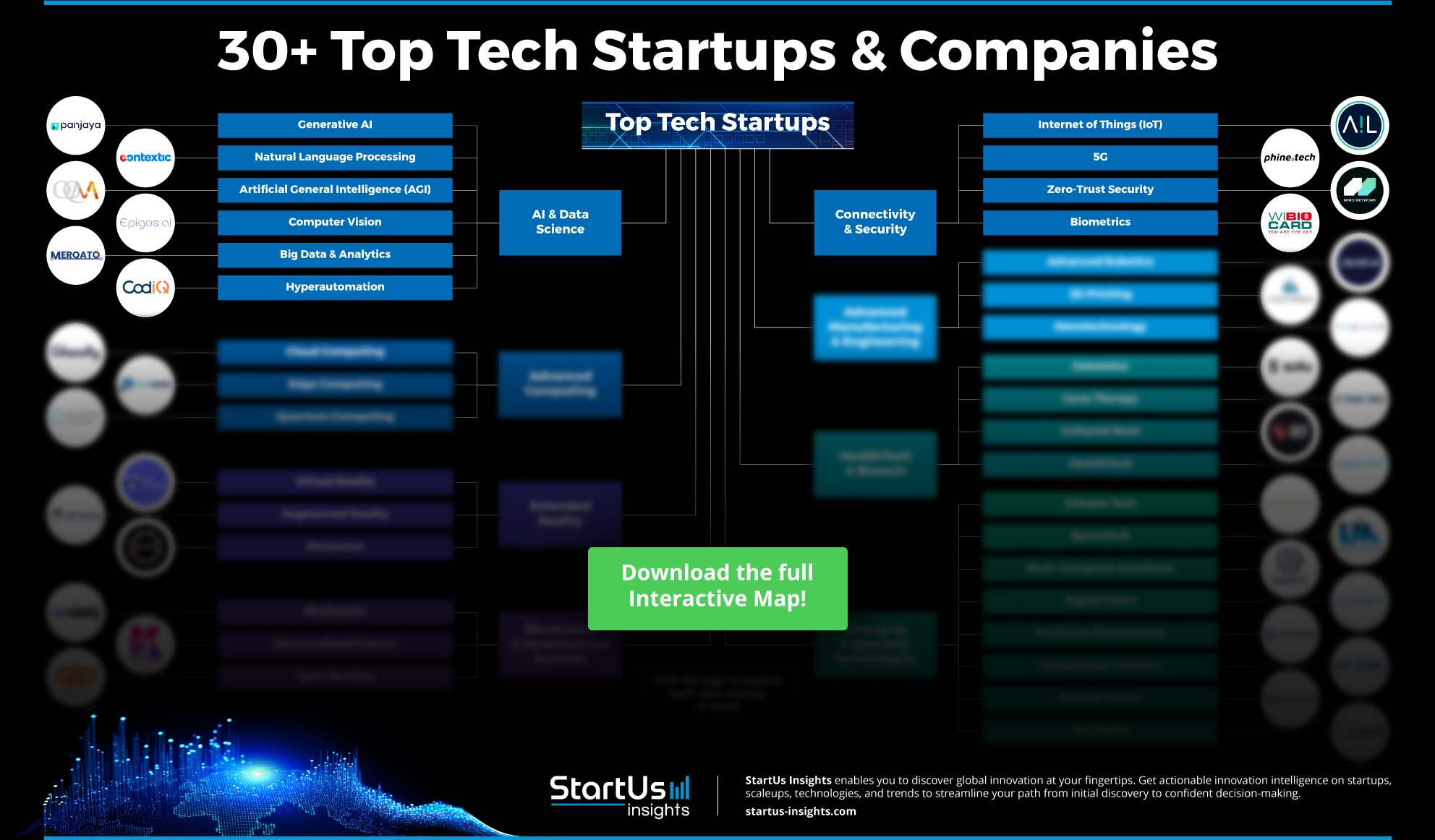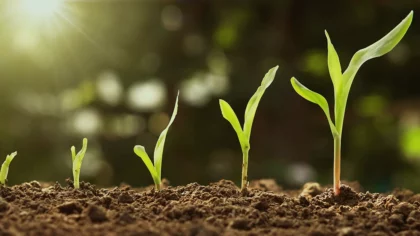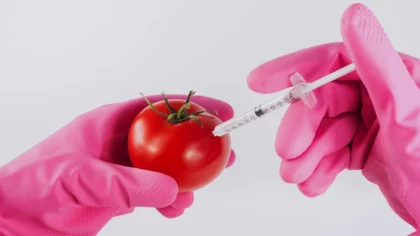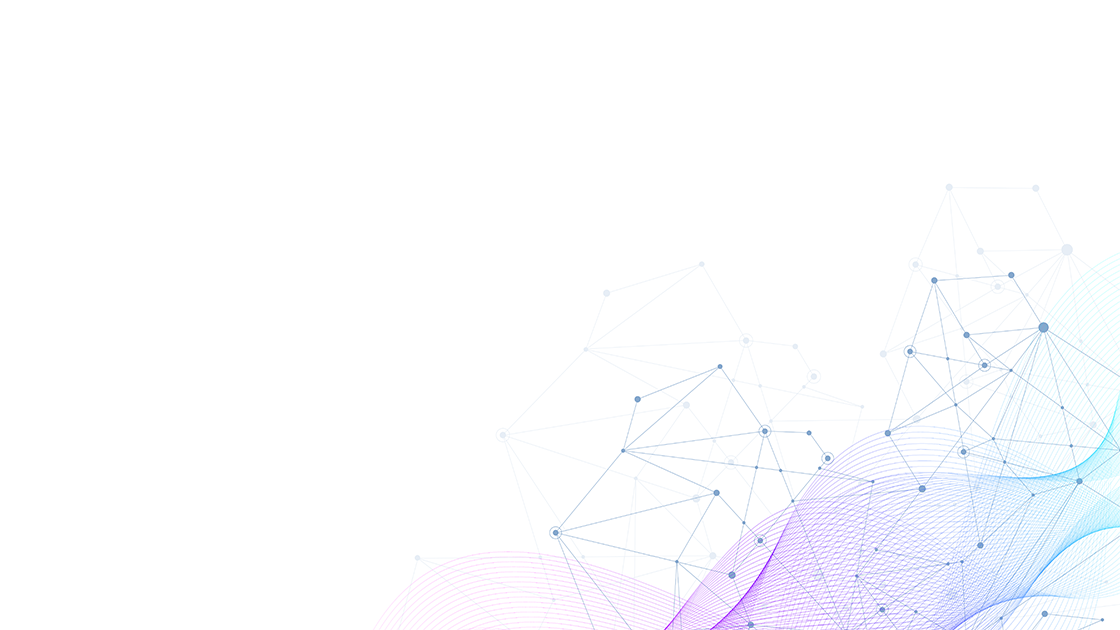The integration of IoT in agriculture addresses challenges like inefficient resource management, labor shortages, and unpredictable weather conditions. This article explores IoT applications in precision farming, crop health monitoring, livestock management, farm safety, soil quality monitoring, weather stations, smart pest control, and more. It also highlights startups like LiFi4Food, which offers battery-free sensors for low-maintenance crop monitoring and reduces carbon emissions.
BioCV is another startup whose web-based platform leverages real-time data and AI for improved livestock care. As IoT continues to develop greenhouse automation, weather monitoring, supply chain tracking, and more, farmers, agribusinesses, technology providers, and policymakers must adopt IoT to stay competitive in the rapidly evolving agricultural landscape.
Why should you read this report?
- Gain in-depth insights into the top 10 applications of IoT in Agriculture.
- Learn about three practical use cases for each application.
- Meet 10 innovative startups advancing these applications.

FAQs: Applications of IoT in Agriculture
How is IoT used in agriculture?
IoT in agriculture enables real-time monitoring and data-driven decision-making by connecting sensors, devices, and equipment throughout farms. Farmers use IoT sensors to track soil moisture, temperature, and nutrient levels, allowing precise irrigation and fertilization.
Drones equipped with IoT technology monitor crop health which detect diseases or pests early. Livestock monitoring is another application, where IoT devices track animal location, health metrics, and behavior, improving herd management. Additionally, IoT systems integrate with automated machinery, like tractors and harvesters, to streamline planting, watering, and harvesting processes based on real-time data.
What are the advantages of IoT in agriculture?
By providing real-time data, IoT allows farmers to minimize water, fertilizer, and pesticide use to lower costs and reduce environmental impact. IoT also improves crop yields through precise monitoring and early detection of issues like pests or nutrient deficiencies. This early intervention reduces losses and maximizes productivity. Further, IoT enables farmers to continuously monitor animal health for better livestock management.
Key Takeaways
- Precision Farming
- Use Cases:
- Automated Irrigation
- Precision Fertilization
- Land Use Planning
- Startup to Watch: Droppity
- Use Cases:
- Crop Health Monitoring
- Use Cases:
- Disease Detection
- Nutrient Level Tracking
- Microclimate Monitoring
- Startup to Watch: LiFi4Food
- Use Cases:
- Livestock Monitoring
- Use Cases:
- Health Monitoring Wearables
- Geofencing
- Feeding Optimization Systems
- Startup to Watch: BioCV
- Use Cases:
- Greenhouse Automation
- Use Cases:
- Climate Control Systems
- Automated Nutrient Delivery
- Irrigation Scheduling & Water Recycling
- Startup to Watch: Agrilogiq
- Use Cases:
- Farm Safety
- Use Cases:
- Drone Surveillance
- Wearable Devices for Workers
- Automated Hazard Detection Systems
- Startup to Watch: AgriGuardian
- Use Cases:
- Soil Quality Monitoring
- Use Cases:
- pH Level Measurement
- Nutrient Content Analysis
- Soil Compaction Monitoring
- Startup to Watch: MazaoHub Precision Agriculture
- Use Cases:
- Weather Monitoring Stations
- Use Cases:
- Localized Weather Forecasting
- Frost Prediction Alerts
- Evapotranspiration Measurement
- Startup to Watch: Schedule-it
- Use Cases:
- Smart Pest Control
- Use Cases:
- Smart Traps with Alerts
- Biological Control
- Pest Behavior Monitoring
- Startup to Watch: Scoutlabs
- Use Cases:
- Yield Prediction and Enhancement
- Use Cases:
- Growth Stage Tracking
- Harvest Timing Optimization
- Crop Modeling Data Collection
- Startup to Watch: Khet Aadhaar
- Use Cases:
- Supply Chain Tracking
- Use Cases:
- Temperature-Controlled Logistics
- Inventory Management
- Farm to Table
- Startup to Watch: dFarm
- Use Cases:
Where is this Data from?
StartUs Insights provides data through its comprehensive Discovery Platform, which covers 4.7+ million startups, scaleups, and tech companies globally, as well as 20K+ emerging technologies & trends. The platform excels in startup and technology scouting, trend intelligence, and patent searches, offering a detailed view of the innovation landscape. For this report, we analyzed technologies within specific industries using the trend intelligence feature. During this research, we identified patterns and trends, pinpointing relevant use cases and the startups developing solutions for each. More capabilities and details are available at StartUs Insights Discovery Platform.
Top 10 Applications of IoT in Agriculture [2025 & Beyond]
1. Precision Farming
Efficient water, fertilizer, and pesticide management is crucial in agriculture. For example, many agricultural companies are using IoT-based soil moisture sensors to provide real-time data on soil conditions. Automated irrigation systems use this data to deliver precise water distribution, reduce wastage, and improve crop growth.
Drones with multispectral imaging and sensors offer detailed aerial views for early disease detection and targeted interventions. IoT-enabled weather stations track local conditions for farmers to plan planting and harvesting effectively despite unpredictable climate patterns. Additionally, autonomous tractors and harvesters use GPS and IoT data for precise field operations. These technologies create a data-driven and sustainable agricultural practice.
Noteworthy Example: Biz4Intellia provides IoT-enabled precision agriculture solutions that focus on real-time crop health monitoring and smart irrigation systems.
Startup to Watch: Droppity
US-based startup, Droppity develops a soil moisture sensor that assists farmers in increasing production while managing costs. The sensor provides real-time data on soil moisture levels for farmers to improve irrigation and ensure that crops receive optimal water. It offers easy installation, a durable design, and a long-lasting battery which makes it suitable for all seasons, while the included worldwide SIM card increases connectivity. Additionally, Droppity offers features like hyperlocal weather monitoring, yield forecasting, and a field scouting tool that allows farmers to track growth and manage operations efficiently.
2. Crop Health Monitoring
Remote sensing technologies enable real-time monitoring to detect pests and diseases early, enabling farmers to reduce major losses. Fluctuations in soil moisture, temperature, and weather conditions affect crop health. Soil moisture sensors provide vital data for irrigation management, while IoT-enabled weather stations track environmental factors like temperature and humidity.
For example, smart monitoring systems in southern Spain’s olive groves use IoT devices to track crop health and environmental conditions. Besides, the large volumes of agricultural data generated overwhelm farmers and complicate the extraction of actionable insights. Overall, integrating these IoT solutions improves agricultural sustainability and productivity.
Noteworthy Example: Cropin specializes in smart agriculture products that use IoT for real-time crop monitoring and automated irrigation systems.
Startup to Watch: LiFi4Food
LiFi4Food is a Spanish company that develops battery-free sensors for precision agriculture that enable continuous monitoring of crop health throughout the year. Its sensors harvest energy from ambient light to power communication to allow real-time data transmission without battery replacements. This innovative approach reduces maintenance efforts and minimizes the carbon footprint of agri-food facilities. Additionally, the sensors connect to the internet, allowing farmers to optimize growing conditions and increase productivity.
3. Livestock Monitoring
Livestock health issues reduce productivity and increase mortality. Wearable devices, like smart collars and ear tags, offer continuous monitoring of vital signs and movements. This solution allows farmers to detect illnesses early and respond swiftly. Additionally, farmers struggle to improve resource usage, such as feed and water, without real-time data. GPS devices track livestock locations and movements for better land usage and feed allocation.
Besides, IoT solutions with integrated data analytics allow farmers to maintain detailed records of livestock movements and health data. This solution increases traceability and enables compliance with regulatory standards while providing transparency for consumers. Further, livestock monitoring systems boost productivity and improve animal welfare while reducing costs.
Noteworthy Example: Moocall specializes in monitoring pregnant cows, providing alerts to farmers when a cow is about to calve. This allows for timely intervention and management.
Startup to Watch: BioCV
BioCV, a German startup, develops a web-based application that simplifies livestock management. This platform allows farmers to manage their livestock while accessing data and insights through LISA, its integrated technology. The application features a user-friendly interface that efficiently organizes various aspects of livestock care. It continuously monitors the fertility status of animals, improves insemination processes, and provides accurate birth predictions for farmers to plan care for pregnant animals effectively.
The company’s products, including the BioTag wearable sensor and the BioNode wireless device, support health monitoring, birth recognition, estrus detection, and the localization of individual animals within group housing. BioCV improves its AI capabilities with data-driven insights which deliver high-quality results while giving users full control over their data. Customizable information for each animal and local backups provide added flexibility, and all features are accessible through an API for integration with existing applications.
4. Greenhouse Automation
Managing temperature, humidity, and light levels in greenhouses is challenging, especially with fluctuating weather conditions. IoT-enabled environmental sensors monitor temperature, humidity, and light intensity. They provide real-time data for growers to maintain optimal conditions. Efficient management of water, nutrients, and energy consumption also poses a major challenge.
Automated irrigation systems use soil moisture sensors and weather forecasts to deliver precise amounts of water as needed. Additionally, the agricultural sector also faces a shortage of skilled labor that complicates greenhouse operations. Further, integrating IoT technologies into greenhouse operations allows agricultural producers to tackle challenges effectively that boost productivity and sustainability.
Noteworthy Example: DeepBerry, a Chinese startup uses sensors, AI, big data, and cloud computing in agricultural processes to deliver precise nutrients to optimize irrigation and increase crop yields.
Startup to Watch: AgriLogiq
South African startup, AgriLogiq delivers greenhouse automation solutions that improve sustainable farming practices. It utilizes proprietary poly-greenhouse automation software and hardware for climate control, irrigation, and fertilization systems. The company’s modular design incorporates easy add-ons and remote access for farmers to adapt the system to their specific needs. Additionally, AgriLogiq offers hands-on customer support and extensive expertise in managing various crops, including high-value vegetables and medicinal plants. Its data-driven approach increases crop yield while saving energy, water, and costs for growers to thrive in challenging environments.
5. Farm Safety
Agricultural work exposes workers to dangerous environmental conditions that increase the risk of accidents and health issues. Wearable safety devices track workers’ health and location to guarantee they do not remain in hazardous conditions for extended periods. Many wearables also include environmental sensors that alert workers to harmful gas levels or bad weather. Further, extreme weather, pests, and soil degradation threaten crop health and worker safety.
Drones equipped with cameras and sensors monitor fields for pests, diseases, and environmental stress for quick intervention by the farmers. IoT-enabled irrigation solutions adjust water delivery based on real-time data and address chemical exposure and water scarcity issues. These IoT technologies improve resource management and foster healthier working environments for farmers.
Noteworthy Example: Tektelic enhances farm safety through its IoT sensors that monitor soil moisture, temperature, and livestock health for farmers to make informed decisions based on real-time data.
Startup to Watch: AgriGuardian
An Ireland-based startup, AgriGuardian offers a Safety as a Service platform to protect vulnerable individuals on farms. The company provides a safety device that monitors and alerts when a user enters the farm and approaches registered guardians. It features Alert Zones and Safe Zones, allowing designated Guardians to draw virtual boundaries on a map to prevent children from entering dangerous areas or leaving safe zones.
Additionally, the company includes an Anchoring feature, virtually tethering the most vulnerable to a guardian, and sending an alert if they exit the guardian’s range. The Proximity feature notifies Guardians when someone enters a close range of approximately 20 meters, for timely awareness, especially in noisy environments like machinery operations. These functionalities create a safety network, raising awareness and improving communication between guardians and protected users.

6. Soil Quality Monitoring
Traditional soil testing provides inconsistent and delayed data. Wireless Sensor Networks (WSNs) address this using multiple sensors to continuously monitor soil moisture, temperature, and nutrient levels. Additionally, monitoring large farmlands is labor-intensive and costly. For example, the soil health monitoring system integrates multiple sensors and data analytics to provide real-time insights into soil conditions.
Besides, low-power wide-area Networks (LPWANs) connect sensors over long distances for efficient large-scale monitoring. Cloud-based analytics platforms also offer real-time decision-making by processing collected data remotely and delivering insights. As climate change disrupts agricultural output, soil quality monitoring allows farmers to adopt more resilient and sustainable practices.
Noteworthy Example: CropX offers an ag-tech platform that uses IoT sensors for soil monitoring, enabling farmers to make data-driven decisions.
Startup to Watch: MazaoHub Precision Agriculture
MazaoHub Precision Agriculture is a Tanzanian startup that provides hyperlocal soil analytics through its soil scanning technology. It enhances supply chains and empowers farmers with actionable insights through its Farm ERP Tool, Soil Analysis Tool, AI-powered agronomy services, sensors, and IoT solutions. This innovation automates real-time data collection using geo-tagged sensors to monitor soil nutrients, pH, moisture, temperature, and electro-conductivity. The soil scanning technology has features like affordable soil testing and access to expert advisory services through farmer excellence centers. It acts as a trust and value creation hub for smallholder and commercial farmers.
7. Weather Monitoring Stations
Weather stations in agriculture struggle to capture precise microclimate variations across farmlands, which complicates the accurate monitoring of temperature, humidity, and soil moisture. IoT-enabled precision sensors improve data granularity, but frequent maintenance and power management in remote areas complicate operations. Low-Power Wide-Area Networks (LPWAN) address these challenges by providing low-maintenance performance in such locations.
Moreover, IoT gateways facilitate the aggregation and integration of data from isolated weather stations into farm management platforms. Edge-enabled weather stations further reduce latency and deliver timely insights, even in areas with limited connectivity. Additionally, wireless agro-meteorological stations offer essential data on temperature, relative humidity, solar radiation, and rainfall. These IoT solutions boost productivity and sustainability in agriculture.
Noteworthy Example: Envira specializes in providing wireless agricultural weather stations that create an IoT sensor network for real-time monitoring of temperature, humidity, wind speed, and solar radiation.
Startup to Watch: Schedule-it
Australian startup, Schedule-it offers a weather monitoring station for farmers to track real-time weather conditions in remote areas. This system utilizes a professional and rugged weather station equipped with a versatile sensor suite. It includes a rain gauge for measuring rainfall, a canopy sensor for temperature and humidity, an anemometer for wind speed and direction, and a solar radiation sensor for accurate evapotranspiration (ETo) readings.
Additionally, the telemetry feature offers cellular connectivity. This allows easy data transmission to the Schedule-it platform or dashboard for users to access on their phones or PCs. The platform also includes a temperature heat index for livestock management, rainfall intensity tracking, and Delta T calculations for spray drift management. By assembling all IoT units in its NSW warehouse, the company customizes solutions tailored to individual farm needs.
8. Smart Pest Control
Excessive pesticide use leads to resistance in pest populations. IoT sensors monitor environmental conditions and allow farmers to apply pesticides only when necessary. Farmers also struggle to obtain timely information about pest populations. Smart traps with real-time alerts enable prompt interventions and reduce crop damage. The vast amount of data from monitoring devices complicates data management and actionable insights. Further, these solutions foster proactive management strategies and sustainable agricultural practices that increase productivity and profitability.
Noteworthy Example: Anticimex has developed the SMART Digital Rodent Control System, which uses IoT technology to monitor rodent activity. The system detects infestations before they occur by analyzing data on rodent movements and behaviors.
Startup to Watch: Scoutlabs
Scoutlabs is a Hungarian company that transforms traditional pest control with its IoT-enabled digital trap network. The Mini is an IoT device equipped with a camera that captures a daily image and uploads it to the company’s server. An image recognition algorithm analyzes the photo for agronomists to assess pest presence. Farmers monitor pest pressure in real time and view updates every day.
The company also replaces manual traps with a digital system that uses artificial intelligence to monitor and detect pest pressures in real time. Each trap is self-powered by solar energy, weatherproof, and equipped with cellular connectivity for constant operation and cloud-based AI support. This technology provides automatic notifications for farmers to take precision action based on detected pest activity.
9. Yield Enhancement and Prediction
Extreme weather creates unpredictability in farming, but IoT devices with weather sensors collect real-time data on temperature, humidity, and rainfall to address these challenges. This solution allows farmers to make informed decisions about irrigation and planting schedules. Many farmers also struggle to maintain optimal soil health. IoT-enabled soil sensors monitor moisture levels, pH, and nutrient content, allowing precise application of fertilizers and amendments.
The smart farming platform integrates IoT devices and data analytics to increase crop production and improve yield forecasting. Also, drones equipped with multispectral cameras capture aerial images of fields to detect early signs of pests and diseases. Further, these technologies support sustainable agricultural practices while increasing food security amid climate change.
Noteworthy Example: Arable with its Arable Mark device provides a weather and crop monitoring system that integrates IoT sensors to gather data that analyze how rainfall, temperature, and solar radiation influence plant growth over time.
Startup to Watch: Khet Aadhaar
Khet Aadhaar is an Indian startup that registers all farms and farmers under a centralized system to capture data on soil, crops, weather, and farming practices. It employs a subscription model and a Just-in-Time (JIT) approach, which reduces turnaround time. The company generates large datasets throughout the seed-to-plant growth cycle, enabling it to monitor various factors affecting agricultural health, including pests and crop quality. With its patented systems, Khet Aadhaar increases yields and farmer incomes through advanced technological interventions. By steering traditional farming methods towards smart farming techniques, it provides reports on soil, crop health, and agricultural schedules while using IoT and satellite technologies.
10. Supply Chain Tracking
Data collection and reporting in agricultural supply chain tracking face delays. IoT sensors deployed in fields continuously monitor soil conditions, moisture levels, and crop health. Additionally, the logistics of transporting agricultural products lead to delays, spoilage, and increased costs. GPS-enabled fleet management systems improve this process by providing real-time tracking of vehicles. Further, satellite imagery offers detailed insights into crop health and environmental conditions to streamline logistics. Overall, these IoT solutions improve efficiency and sustainability within agricultural supply chains.
Noteworthy Example: AgriDigital provides a cloud-based platform that integrates IoT for managing grain supply chains.
Startup to Watch: dFarm
US based company, dFarm uses supply chain tracking with its Agriculture Information Management System (AIMS), which integrates IoT, blockchain, AI, and big data analytics. This patented technology links deep supply chain hyperdata and stores it centrally in the cloud. The technology provides a view of the agricultural supply chain from farm to marketplace. dFarm processes vast data sets to uncover actionable insights, which allow optimization of sourcing, improvement of freshness and quality, and reduction of waste and spoilage. Additionally, these insights facilitate the exploration of new market opportunities and control of costs.
Leverage the Latest Applications of IoT in Agriculture
Investors are increasingly backing agritech innovations. Some of the major ones include MassChallenge, Y Combinator, Techstars, 500 Global, and Google for Startups. Seed, Series A, venture rounds, and M&A dominate funding types with an average investment of USD 12.6 million per round, demonstrating strong financial support for early-stage innovations.
Act now on the applications of IoT transforming the agriculture industry. With StartUs Insights, you swiftly discover hidden gems among over 4.7 million startups, scaleups, and tech companies, supported by 20000 trends and technologies. Our AI-powered search and real-time database ensure exclusive access to innovative solutions, making the global innovation landscape easy to navigate.
Trusted by industry leaders like Samsung, Nestlé, and Magna, we provide unmatched data, a 360-degree industry view, and data-driven intelligence for confident strategic decisions. Leverage our innovation services to optimize costs, streamline operations, and stay ahead of the curve. Get in touch today to explore how our comprehensive innovation intelligence can drive your success.
Discover All IoT-led Agriculture Technologies & Startups!








